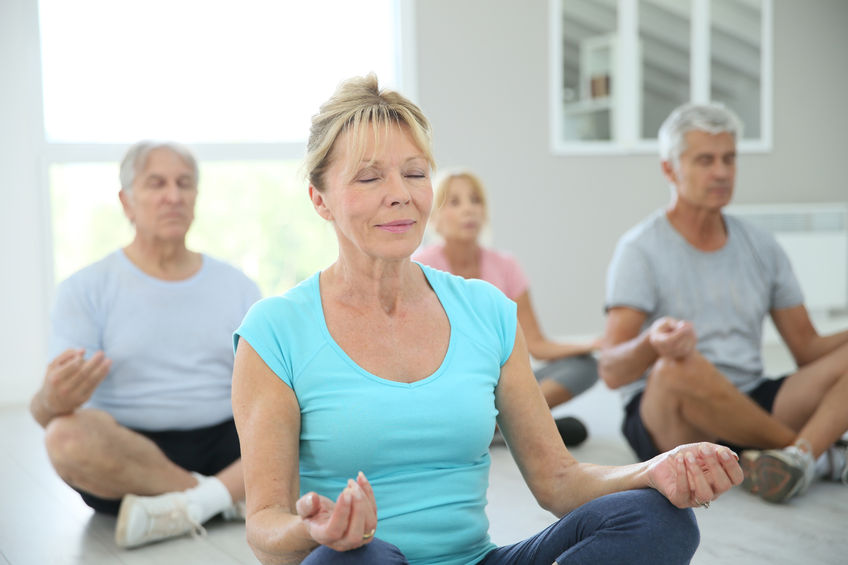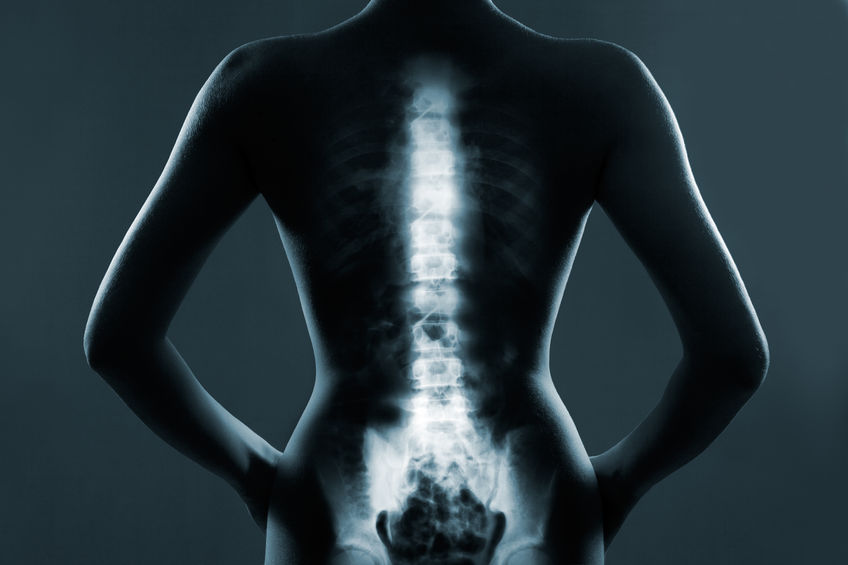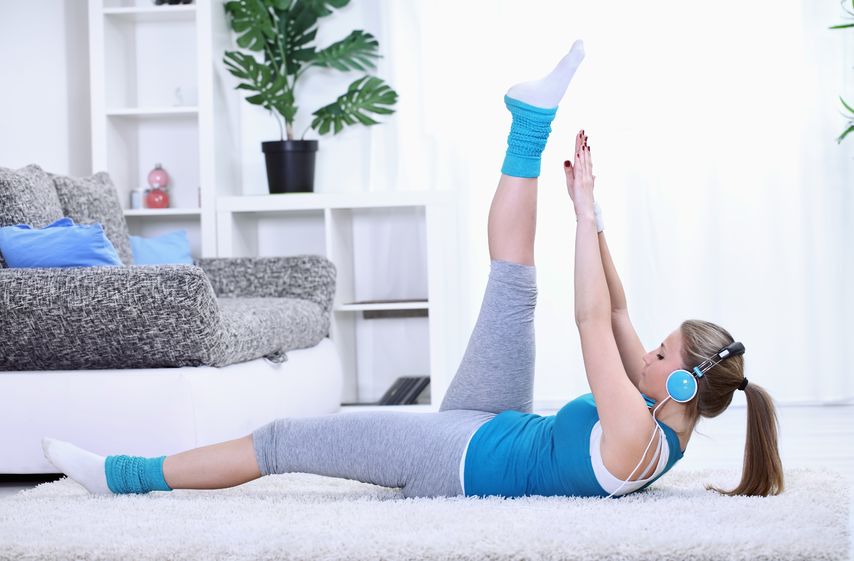What’s New at AOSMI

Starting yoga might feel a little intimidating with all of these images of people doing complex poses such as having a leg behind their head. As with most things, you have to start out simple in order to work up to a more difficult level. Hesitant to try yoga? Here are a couple of reasons to put down the mat and start stretching.
Doing yoga gets you in touch with your body in ways you might not have previously thought possible. It opens up your mind, makes you more limber, plus helps build up some muscle. Yoga can also help you deal with some pain you might be feeling, whether from arthritis, lower back pain, or joint pain. Breathing is a major part of yoga, and has shown to help with breathing problems that might come from having asthma or just weak lungs. When it comes to yoga, the benefits feel like they’re almost never ending.
Think you don’t have the time or the money? Think again. Yoga is something that can be done in the comfort of your own home. All you’ll need is an internet connection if you want to do it that. Nowadays, a lot of yoga instructors are on YouTube or their own website, where they put up easy to follow instructional videos on how to do yoga. Or if you prefer a more personal way of teaching, there are a multitude of yoga instructors to choose from.
If you’ve over worked your body, visit an orthopedic specialist to avoid any further complications that might result in the need of New Jersey orthopedic surgeons. Make an appointment with Advanced Orthopedics and Sports Medicine Institute today.

Opposed to traditional spine surgeries, minimally invasive spine surgery (MISS) is done with a hollow tube, called a tubular retractor, that is inserted via a small incision. Using the retractor the surgeon can see and have access to the affected area all while causing less trauma to any encompassing tissues and muscles.
The tubular retractor can also be used to insert any surgical implements and any needed surgical hardware like rods or screws. MISS is entirely done by a real-time x-ray machine, a fluoroscopy, which helps ensure that the spinal surgeon is able to carefully repair and treat the target area.
Be aware that not all kinds of spinal surgery can be done with MISS, and that you might have to have traditional surgery done instead. Examples of conditions that minimally invasive spine surgery can be done for are spinal deformities like scoliosis, spinal infections, or spinal tumors. Because MISS is done with a smaller incision there is a reduced risk of complications during both surgery and post-surgery, less damaged to the muscles and tissues around the spine, and a faster recovery time.
Minimally invasive spine surgery should only be considered after other options such as conservative therapies have not worked. Be sure to contact an orthopedic specialist to ensure for a proper diagnosis and treatment. Contact Advanced Orthopedics and Sports Medicine Institute to make an appointment with New Jersey orthopedic surgeons.

Looking for family friendly fun this autumn in New Jersey? Look no further! Whether you’re wanting to spend time with your children, grandkids, or siblings, New Jersey has activities for all ages. You’ll be sure to find something that everyone will enjoy.
What’s autumn without pumpkins? Why not visit a pumpkin patch, where you and your family can hand pick a pumpkin right out of the patch. If you want to have to the perfect pumpkin to make a spooky jack-o-lantern stop by East Orchards in Colts Neck or Giamarese Farm and Orchards in East Brunswick. Just remember to lift that big pumpkin using your knees and not your back!
Looking for something to do with older kids? Go to a haunted house with them to experience thrills and frights together. Have a fun time getting scared out of your wits or laughing at your family members scream out in surprise. Visit Camp Evans Base of Terror in Wall or Oasis Island of Terror in Robbinsville, where ghost, ghouls, and monsters alike will be waiting for you.
Why not try a traditional fall activity and adventure into a corn maze? This is something the whole family can do together or it could be a competition to see who gets out first. Not only will there be a corn maze in Atlantic Farms in Wall, Happy Day Farm in Manalapan, and Heaven Hill Farm in Vernon, all have hay rides and a petting zoo! Be sure to watch where you are walking, though, to avoid tripping and injuring yourself.
Don’t let any aches or sprains keep you from having fun with your family, visit with an orthopedic specialist to ensure that you can have your adventure this autumn. Advanced Orthopedics and Sports Medicine Institute has many skilled and well-versed New Jersey orthopedic surgeons. Contact AOSMI today to make an appointment with them.

With the onset of fall and the return of students to scholastic sports, both youth and adult football players, soccer players, runners, cheerleaders, wrestlers, and volleyball players often change the intensity level or frequency of their activities, which predisposes them to potential injury. Advanced Orthopedics and Sports Medicine treats players of nearly every sport that is popular in the tristate area. Their orthopedic specialists explain that, regardless of the age or experience level of the player, following safety protocols can minimize the risk of painful afflictions.
There is no way to avoid every possible accident when playing sports. Even avoiding high-impact or team sports does not project athletes entirely. However, maintaining workouts in the off-season can help to make the transition back into full effort less treacherous. New research has supported the idea that over-specialization in one sport or position while the body is still developing is counterproductive and may lead to more physical risks.
Off the field, preparation is also necessary. Seeing a physician regularly to ensure that the player is fit to play is imperative, as is checking the integrity of any equipment used. Even worn out shoe laces can lead to injuries from falls or stumbles. Specialized safety gear often has an expiration date; equestrian helmets, so vital for protecting against traumatic brain injuries, should only be used for five years from the date of original purchase, and replaced after any impact. Football helmets have a maximum 10-year life span, shorter if a serious collision has occurred. Selecting, maintaining, and appropriately replacing any sports-related equipment and gear is an imperative practice.
Still, even with all the correct equipment in good working order, injuries occur. Dr. Jessica Arias Garau, MD, FAAPMR, double board certified in Physical Medicine and Rehabilitation and Interventional Pain Management, says this about fall sports: “I tell all my patients that you can’t predict every accident or injury, but you can reduce your recovery time by being in the best health possible, both through sports and wellness.” Football players frequently experience knee ligament and cartilage damage, while soccer players are more prone to sprains and strains in the lower leg.
How promptly treatment is received, as well as the quality of the treatment provided can make a difference in the speed and quality of the player’s recovery. Often, players don’t mention–or minimize–smaller injuries or discomfort and continue to participate, for fear of losing playing time or otherwise missing out. This is a harmful, and potentially dangerous, misconception. Addressing minor issues through physical therapy or other integrative, nonsurgical methods can ward off further damage and prevent the necessity for future surgical interventions.
The experienced practitioners at Advanced Orthopedics and Sports Medicine are available to address a wide range of fall sporting concerns.

Aerobic and anaerobic, they might have similar sounding names, but both types of training vary vastly. Aerobic training is considered to be a ‘moderate-intensity training’, on the other hand anaerobic training is a ‘high-intensity training’. But what is the difference between a moderate- and high-intensity training?
When doing aerobic training, you should be working hard, but not hard enough that you’ll find yourself out of breathe. You should be able to talk to a friend or trainer while doing aerobic exercises such as, jogging or biking. If you want to work on increasing your stamina, aerobic training is what you’ll want to try. Aerobic training also comes hand in hand with health benefits such as it strengthen your heart and lungs, helps reduce the risk of diabetes, burns fat, calories and glycogen (stored glucose), and it also boosts your mood.
Oppositely, with anaerobic training, you’re pushing yourself to the limit. It’s an intense form of exercises that will have your heart beating fast and your lungs bursting for air. Anaerobic exercises like sprinting and weightlifting, are types of intense forms of training. When doing any kind of anaerobic training, your body is going to burn a lot of calories in a small amount of time. Not only that, but you’ll also experience an ‘after burn’ or ‘oxygen debt’ meaning that your body will continue to burn calories for up to two hours after you’ve completed exercising.
If you find that you’ve over exerted yourself by doing any form of training, be sure to speak to an orthopedic specialist. Putting of a doctor’s visit can lead to an injury or strain becoming worse and may require treatment by New Jersey orthopedic surgeons. Contact Advanced Orthopedics and Sports Medicine Institute to make an appointment.







